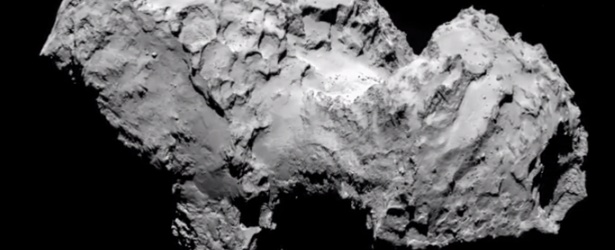Rosetta mission findings: no room for dirty snowballs

The European Space Agency's Rosetta mission to the Comet 67P is attracting worldwide attention to comet science. While months remain until the team attempts to land a probe on the comet's surface, astonishing revelations are already confronting scientists on Earth.
Story, Three Surprising Facts About Comet 67P/Churyumov-Gerasimenko: http://www.popularmechanics.com/scien…

Rosetta reached the 4-km wide Comet 67P/Churyumov-Gerasimenko on August 6, 2014. It is expected to remain in its close proximity while scientists study the comet's composition and attempt to land a probe. Rosetta, its lander and the comet will circle around the Sun in December 2015 on their way out of the inner Solar System.
Rosetta will take thousands of images that will provide further details of the comet's major landmarks, its rotation speed and spin axis orientation. It will also make important measurements of the comet's gravity, mass and shape, and will make an initial assessment of its gaseous, dust-laden atmosphere, or coma.
The landing of its Philae lander is planned for November 2014. Philae is expected to send back a panorama of its surroundings and very high-resolution pictures of the surface. It will also perform on-the-spot analysis of the composition of the ices and organic material (at the time the mission was planned it was still thought that Comet 67P is covered in ice). A drill is supposed to take samples from 20–30 cm below the surface, and feed them to Philae's laboratory for analysis.
The comet will reach its closest distance to the Sun on August 13, 2015, at about 185 million km, roughly between the orbits of Earth and Mars.
As the comet hurtles through the inner Solar System at around 100 000 km/h, the relative speed between orbiter and comet will remain equivalent to walking pace. During this 'escort' phase the orbiter will continue to analyze dust and gas samples.
By December 2015, both the spacecraft and the comet will have circled the Sun and be on their way out of the inner Solar System.
Video courtesy of The Thunderbolts Project
Featured image: ESA

Commenting rules and guidelines
We value the thoughts and opinions of our readers and welcome healthy discussions on our website. In order to maintain a respectful and positive community, we ask that all commenters follow these rules.